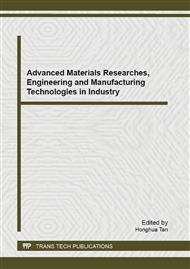p.3
p.10
p.14
p.19
p.24
p.30
p.35
p.40
Direct Synthesis of Titanium Phosphates Functionalized Ordered Mesoporous Materials (SBA-15)
Abstract:
A series of functionalized SBA-15 with various contents of titanium phosphates [TiPO-SBA-15(x)] have been successfully synthesized by a facile and effective method. The obtained products possess well ordered mesostructure, high surface area and large pore size. TEM and images show that mostly titanium phosphates species have deposited on the external surface of SBA-15. UV-Visible spectra, 31P MAS NMR and XPS indicate that the coordinated environment of Ti and P species in TiPO-SBA-15(x) is very similar to that of conventional amorphous titanium phosphates (TiPO). Very importantly, catalytic data in dehydration of cyclohexanol show that is more active than conventional titanium phosphates (TiPO), and their catalytic activities can be easily recovered. All these results indicate that TiPO-SBA-15(x) is a novel, active and recycled catalyst for dehydration of alcohols, which may be potentially useful heterogeneous catalysts in practical applications.
Info:
Periodical:
Pages:
3-9
Citation:
Online since:
September 2013
Authors:
Price:
Сopyright:
© 2013 Trans Tech Publications Ltd. All Rights Reserved
Share:
Citation:


